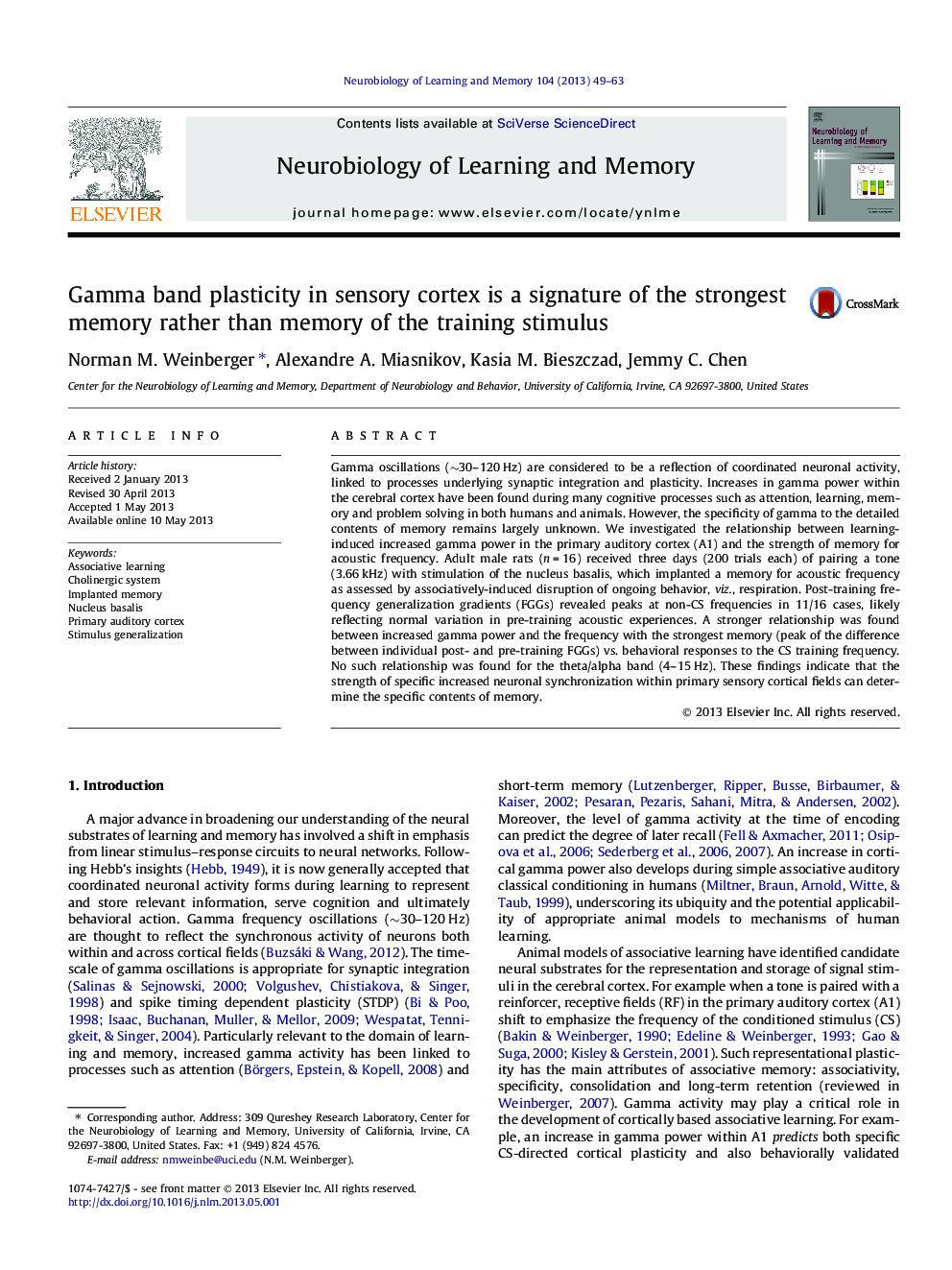| Article ID | Journal | Published Year | Pages | File Type |
|---|---|---|---|---|
| 7300474 | Neurobiology of Learning and Memory | 2013 | 15 Pages |
Abstract
Gamma oscillations (â¼30-120 Hz) are considered to be a reflection of coordinated neuronal activity, linked to processes underlying synaptic integration and plasticity. Increases in gamma power within the cerebral cortex have been found during many cognitive processes such as attention, learning, memory and problem solving in both humans and animals. However, the specificity of gamma to the detailed contents of memory remains largely unknown. We investigated the relationship between learning-induced increased gamma power in the primary auditory cortex (A1) and the strength of memory for acoustic frequency. Adult male rats (n = 16) received three days (200 trials each) of pairing a tone (3.66 kHz) with stimulation of the nucleus basalis, which implanted a memory for acoustic frequency as assessed by associatively-induced disruption of ongoing behavior, viz., respiration. Post-training frequency generalization gradients (FGGs) revealed peaks at non-CS frequencies in 11/16 cases, likely reflecting normal variation in pre-training acoustic experiences. A stronger relationship was found between increased gamma power and the frequency with the strongest memory (peak of the difference between individual post- and pre-training FGGs) vs. behavioral responses to the CS training frequency. No such relationship was found for the theta/alpha band (4-15 Hz). These findings indicate that the strength of specific increased neuronal synchronization within primary sensory cortical fields can determine the specific contents of memory.
Keywords
Related Topics
Life Sciences
Neuroscience
Behavioral Neuroscience
Authors
Norman M. Weinberger, Alexandre A. Miasnikov, Kasia M. Bieszczad, Jemmy C. Chen,
